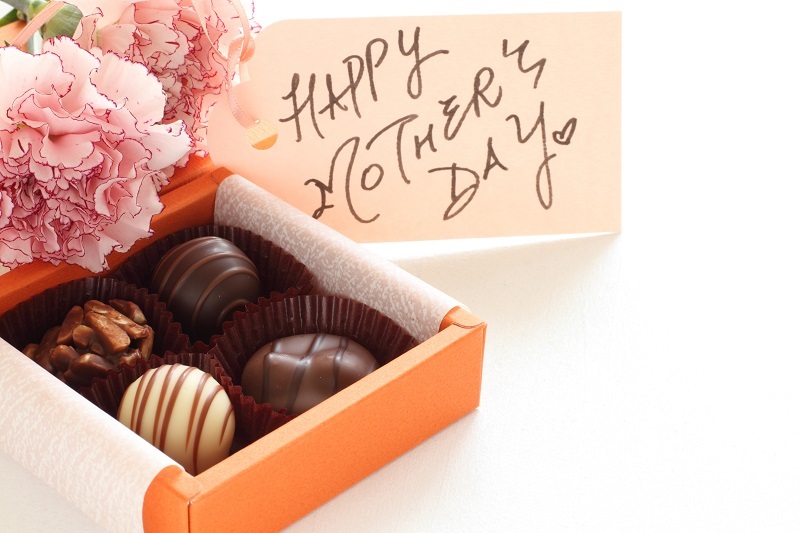Birth Month Flowers: Delve into their Cultural and Historical Meanings
Posted on 17/08/2025
Birth Month Flowers: Delve into their Cultural and Historical Meanings
Understanding the significance of birth month flowers offers a fascinating glimpse into human culture and history. Much like birthstones, each month of the year has a flower associated with it, imbued with symbolism, legend, and deep-rooted tradition. From ancient civilizations to modern times, the meaning and beauty of these monthly floral symbols continue to inspire people across the globe. In this comprehensive guide, let us explore each month's special bloom, their origins, cultural influences, and the unique messages they convey.
The Tradition of Birth Month Flowers: An Overview
The concept of birth month flowers can be traced back to ancient Rome, where the act of giving flowers was not only a gesture of affection but also a way to convey messages and blessings. Over centuries, this tradition evolved, leading to the establishment of official flowers for each month, reflecting local flora, myths, and beliefs.
- Floral symbolism connects people to their birth month in a meaningful way.
- Cultural interpretations differ, but the core practice of assigning months to flowers is universal.
- Birth month flowers are often used in birthday bouquets, jewelry, and home decor.

January: Carnation and Snowdrop
The Carnation: Symbol of Love and Fascination
The carnation, with its ruffled petals and diverse hues, is the primary flower for those born in January. In various cultures, this flower is associated with devoted love, fascination, and distinction.
- Historical Significance: The carnation has been cultivated for over 2,000 years, once revered by the ancient Greeks and Romans in ceremonial crowns.
- Cultural Meaning: Different colors evoke distinct sentiments; pink for a mother's love, red for admiration, and white for pure affection.
The Snowdrop: Hope and New Beginnings
As winter's first bloom, the snowdrop signals the approach of spring. Its fragile yet resilient appearance has made it an emblem of hope, rebirth, and the triumph of life over adversity.
February: Violet and Primrose
Violet: Loyalty and Modesty
The violet is celebrated for its deep purples and delicate scent. Symbolically, it stands for modesty, faithfulness, and virtue. Ancient Greeks used violets in love potions, while Romans believed it protected from evil spirits.
Primrose: Young Love
The primrose, with its soft, pastel petals, signifies youthful love and new beginnings. In English folklore, these flowers were often used in spring celebrations as tokens of early affection.
March: Daffodil
Daffodil: Rebirth and New Beginnings
For March birthdays, the daffodil reigns supreme. Its vibrant yellow trumpet heralds the arrival of spring and clean slates. Popular in metaphors for hope and renewal, the daffodil appears in literature, art, and religious ceremonies worldwide.
- Cultural Relevance: In Wales, it's worn on St. David's Day and represents the nation itself.
- Symbolic Meaning: A single daffodil portends misfortune, but a bunch attracts joy and happiness.
April: Daisy and Sweet Pea
Daisy: Innocence and Purity
With its sunny face and white petals, the daisy embodies innocence, purity, and loyal love. Ancient Norse mythology connected the daisy with Freya, goddess of love.
Sweet Pea: Blissful Pleasure
The fragrant sweet pea signifies delicate pleasure, gratitude, and goodbyes. In Victorian times, it was a popular flower for parting gifts and celebrations.
May: Lily of the Valley and Hawthorn
Lily of the Valley: Humility and Happiness
Recognizable by its tiny bell-shaped flowers, lily of the valley is a symbol of humility, happiness, and the return of joy. It's steeped in European folklore and is a traditional wedding flower in France.
Hawthorn: Hope and Fertility
The hawthorn blossom, with its delicate pink and white blooms, is often associated with fertility, hope, and protection. In Celtic mythology, hawthorns marked sacred sites and were believed to grant good luck.
June: Rose and Honeysuckle
Rose: Love in Its Many Forms
Arguably the world's most famous flower, the rose is the primary birth flower of June. Each color tells a different story--red for passionate love, yellow for friendship, white for innocence, and pink for admiration.
- Historical Context: Roses appear in mythologies, royal insignias, and romantic traditions in nearly every culture.
- Symbolism: They can represent secrecy ("sub rosa") and enduring beauty.
Honeysuckle: Devoted Affection
The sweetly scented honeysuckle represents devotion, happiness, and lasting bonds. In Victorian floriography, it was given to express faithful affection.
July: Larkspur and Water Lily
Larkspur: Positivity and Open Heart
With its cascading blue, pink, or purple blossoms, the larkspur stands for joy, positivity, and an open heart. The flower's name is derived from a likeness to a lark's claw.
Water Lily: Enlightenment and Purity
The serene water lily embodies enlightenment, purity, and rebirth, loomed large in Egyptian mythology as a symbol of the sun and creation.
August: Gladiolus and Poppy
Gladiolus: Strength of Character
The tall and striking gladiolus signifies strength, moral integrity, and remembrance. Its name comes from "gladius," Latin for sword, symbolizing Roman gladiators' valor.
Poppy: Peace, Consolation, and Imagination
The vibrant poppy is a symbol of peace, consolation, and creative inspiration. Red poppies are particularly connected with remembrance and honoring the fallen, especially in Commonwealth nations.
September: Aster and Morning Glory
Aster: Wisdom and Valor
Named after the Greek word for "star," the aster represents wisdom, courage, faith, and love. In ancient Greece, asters were placed on altars to honor the gods.
Morning Glory: Affection and Unrequited Love
With its vibrant trumpet-shaped flowers, morning glory opens to reveal affection, renewal, and sometimes unrequited love. In Victorian England, the morning glory was exchanged for heartfelt confessions.
October: Marigold and Cosmos
Marigold: Passion and Creativity
The bold, sun-bright marigold stands for creativity, warmth, and passion. In many cultures, marigolds are used in religious festivities and celebrations of life, such as Mexico's Dia de los Muertos.
Cosmos: Peace and Tranquility
The delicate cosmos flower signifies peace, harmony, and balance. Its name derives from the Greek word for order and harmony.
November: Chrysanthemum
Chrysanthemum: Friendship and Well-Being
The lavishly petaled chrysanthemum is November's sole birth flower, symbolizing friendship, loyalty, and abundant well-being.
- Eastern Traditions: In China, chrysanthemums are tied to longevity and noble character; Japan features them in the Imperial Seal.
- Western Traditions: In Europe, they're often associated with honoring loved ones and remembrance.
December: Narcissus and Holly
Narcissus: Rebirth and Good Fortune
A winter bloom, the narcissus (especially the paperwhite variety) represents rebirth, good wishes, and hope. In Greek mythology, the flower is connected to the story of Narcissus, symbolizing self-reflection and renewal.
Holly: Protection and Joy
The evergreen holly is often used in holiday decorations, conveying protection, joy, and festive cheer. In Celtic lore, holly was thought to guard against evil spirits.
Cross-Cultural Meanings of Birth Month Flowers
While the meaning of birth month flowers varies globally, the tradition endures. Certain countries maintain unique floral calendars, assigning different flowers or additional significance. For example, Japan's "Hanakotoba" or language of flowers, offers a distinct system of floral symbolism.
- Victorian England: Floriography flourished, popularizing the representation of feelings via bouquets.
- Native American Traditions: Flowers and plants assigned as totemic motifs for tribes and birth ceremonies.
- Eastern Symbolism: Many Asian cultures align flowers with virtues, life stages, or planetary events.
How to Incorporate Your Birth Month Flower in Everyday Life
In modern times, birth month flowers have become a charming theme for gifts, personal accessories, and home decor. Here are creative ways to cherish your birthday bloom:
- Jewelry: Lockets and pendants featuring your birth flower for a personal touch.
- Gifts: Create unique bouquets or floral soaps for birthdays and special occasions.
- Home Decor: Wall art, cushions, and vases featuring your flower.
- Tattoo Art: Many choose to ink their birth flower for a lifetime connection.

Frequently Asked Questions About Birth Month Flowers
- Are birth month flowers the same worldwide?
No, while the Western calendar assigns one or two main flowers to each month, different countries and cultures may offer local alternatives. - Can I have two birth month flowers?
Yes, some months, like April and May, have secondary blooms due to cultural evolution and global influences. - How accurate are flower meanings?
While universally accepted, the precise meaning of a flower can vary based on color, region, and era. It's the personal connection that matters most.
In Conclusion: The Timeless Appeal of Birth Month Flowers
The tradition of birth month flowers beautifully bridges history, art, myth, and nature. Whether as a thoughtful gift or a daily symbol of identity, each of these blooms tells a rich, enduring story. By learning about the cultural and historical meanings of birth month flowers, we not only celebrate our own special days but also honor the legacy of symbolism carried forth by generations.
Discover your birth flower and let its tale enrich your understanding of yourself and the world around you.
Related Resources
- Birth Flower - Wikipedia
- FTD: The Birth Month Flowers And Their Meanings
- ProFlowers: The Complete Guide to Birth Month Flowers
Embrace the legacy and personal symbolism of your birth month flower today!
Latest Posts
Birth Month Flowers: Delve into their Cultural and Historical Meanings
The Romantic Resonance of Red Roses on Valentine's Day
Uncover the Floral Symbol of Your Unique Personality





